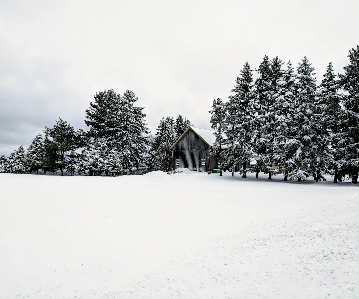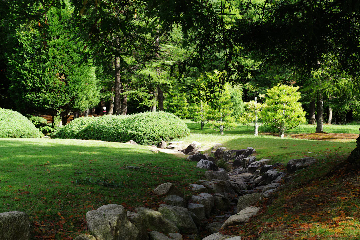Transforming Steep Yards Into Abundant Spaces
Greetings from the Pacific Northwest! I'm Camila Ward, and if you’ve ever glanced at your sloped yard and wondered whether a vegetable garden is possible, let me assure you – with some thoughtful planning, your hillside can become a thriving green haven. Converting a steep patch of lawn into terraced garden beds doesn’t just yield a bounty of vegetables, it brings a whole new heartbeat to your outdoor space.
Your typical front yard can undergo an incredible transformation when you introduce tiered planting zones. Instead of mowing a challenging incline, you’ll witness a tapestry of leafy greens, vines, and vibrant flowers. The secret lies in using terracing to both manage the slope and maximize sunlight. For one Seattle-area family, nearly 6 feet of elevation change over just 10 feet required solid DIY skills and tested even the sturdiest relationships. But oh, was it worth it!
Getting started means understanding your slope’s gradient, investing in robust retaining walls, and, of course, being ready for a bit of mud. The fun begins when you finish the hardscape and watch your first seedlings take root. Trust me; there’s no better feeling than seeing fresh produce grow where grass once ruled.
But be warned: gardening on a slope isn’t just about clever construction. Water, soil, and plant support systems all need a little extra attention to truly thrive.
Design, Soil Lessons, and Watering Tricks
One of the earliest lessons in terraced gardening is about soil settlement. After filling new beds, make sure to let the soil naturally compact – wait a few weeks, if possible, before planting to prevent dips and shifting seedlings. In the cool, rainy months of Seattle, you might even find soil compressing faster than you expect. Don’t rush this stage, or you’ll find yourself with uneven beds and little water puddles.
Watering can also pose a challenge on sloped gardens. Hauling heavy watering cans up and down a terraced space is hardly anyone’s idea of a good time. I recommend installing a basic drip irrigation system and pairing it with a smart water timer. The ease of scheduling regular, efficient watering from your phone means you won’t have to worry during weekend getaways or Seattle’s rare dry spells.
Pathways deserve special mention. With beds closely stacked, having clear, stable paths ensures you can access all corners of your garden without trampling delicate seedlings. Repurposing leftover wall materials for paths not only reduces waste but saves money, too. A small investment in gravel or mulch can also do wonders for traction and mud control – a tip I wish I’d picked up earlier in my home projects career!
Building Sturdy Supports and Embracing Setbacks
Growing vertically is a space-saving must for terraced gardens. Be sure to build climbing supports taller and stronger than you think you’ll need, especially if you’re planting indeterminate tomatoes or heavy vining crops. My first attempt (a five-foot trellis) bowed and buckled under the late-summer veggie load. Learn from my oops: go big, and secure every joint well in advance.
Dealing with pests and unpredictable weather is just part of the journey. Organic-minded gardeners can use natural deterrents like marigolds or a dash of neem oil, but sometimes, critters will get the best of a carrot or two. Instead of stressing, keep your gardening mindset positive. Each year brings new lessons in resilience and adaptation!
| Key Tips For a Thriving Terraced Garden | Benefits |
|---|---|
| Let soil settle before planting | Reduces compaction and seedling shift |
| Install drip irrigation with timer | Conserves water and saves time |
| Build tall, sturdy climbing supports | Prevents collapsing plants, maximizes vertical space |
| Create accessible, stable pathways | Safeguards plants and gardener alike |
| Embrace organic pest control | Maintains garden health and safety |
Enjoying the Journey and Looking Ahead
Gardening on a slope is inevitably a test of patience, flexibility, and optimism – qualities every successful home project needs. Even if your first spring yields a lackluster spinach harvest, don’t despair. Mix up your vegetable varieties, try new techniques, and remember that failures are simply part of the learning curve.
For our Seattle friends, fall is the optimal time for planning and prepping new beds to take advantage of gentler weather. Building in autumn helps avoid the mad spring rush and gets your soil ready for the wet, lively growing months ahead. With terraced beds, every season adds new beauty and bounty to your hillside.
I hope these insights inspire you to tackle that intimidating slope and turn it into your most productive patch. The happiest gardens are grown patiently, one lesson at a time. Happy gardening from your friends at Happy Garden Projects!
References:
[1] Terraced Garden Beds After One Year - Words of Advice - Big Living | Little Footprint
[2] TikTok - Make Your Day: Hillside Vegetable Gardens
Read More

Camila Ward
Author
Raised in a bustling suburb of Atlanta, Camila Ward grew up fascinated by machinery and how things work. She attended Georgia Tech and became a mechanical engineer, quickly making a name for herself through innovative eco-friendly design projects.
After a decade in R&D for a major tech firm, Camila took a leap and opened her own consultancy. She now specializes in sustainable solutions for urban environments, balancing her technical expertise with a commitment to social responsibility.


